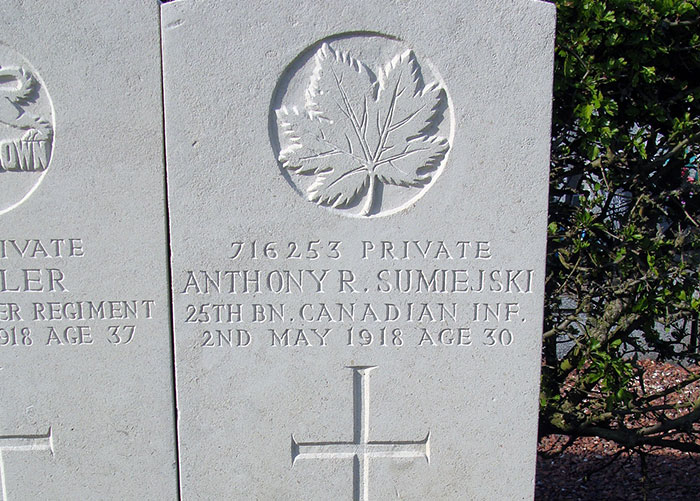Born at Podsamcze, Poland on April 2, 1888, Antony “Anthony” Richard (Antoni Ryszard) Sumiejski emigrated to Nova Scotia in 1912 and moved to Glace Bay where he worked as an interpreter for the Dominion Coal Company. In 1913 he moved to Sydney, where he worked as a foreman of a “nail and wire gang” at the Dominion Iron and Steel Company plant. Naturalized a British subject in 1914, he enlisted with the 106th Battalion (Nova Scotia Rifles) of the Canadian Expeditionary Force (CEF) in June 1916, and sailed for England the following month. It was the beginning of a journey back to Europe, one from which he would never return.
A Life In Photographs
Explore the photograph gallery below to learn more about Anthony’s life and military service.
Birth record for Anthony Sumiejski, 1888. Antony “Anthony” Richard (Antoni Ryszard) Sumiejski was born at Podsamcze, Poland in 1888. Poland was not an independent country at this time; the western region was part of Germany and the eastern region was part of Russia. Read Full Caption... View Full Screen Image
Birth record for Anthony Sumiejski, 1888. Antony “Anthony” Richard (Antoni Ryszard) Sumiejski was born at Podsamcze, Poland in 1888. Poland was not an independent country at this time; the western region was part of Germany and the eastern region was part of Russia. The German government’s treatment of its Polish territory was very harsh, and many Poles immigrated to other countries if they could. (Record courtesy Archiwum Państwowym w Kaliszu, Poland)

City plan of Poznania, 1888. Anthony was estranged from his parents and family prior to his arrival in Canada. We know little of his life in Poland, but he was married (wife Marja) and lived in Poznan (Posen as it was known under German rule), a city in Western Poland. Read Full Caption... View Full Screen Image
City plan of Poznania, 1888. Anthony was estranged from his parents and family prior to his arrival in Canada. We know little of his life in Poland, but he was married (wife Marja) and lived in Poznan (Posen as it was known under German rule), a city in Western Poland. When he later enlisted in the CEF in 1916, Anthony claimed to be single, and gave his friend Robert Hubley’s name as his next of kin. (Map courtesy K. Wnukowski/National Archive in Poznan. http://cyryl.poznan.pl)
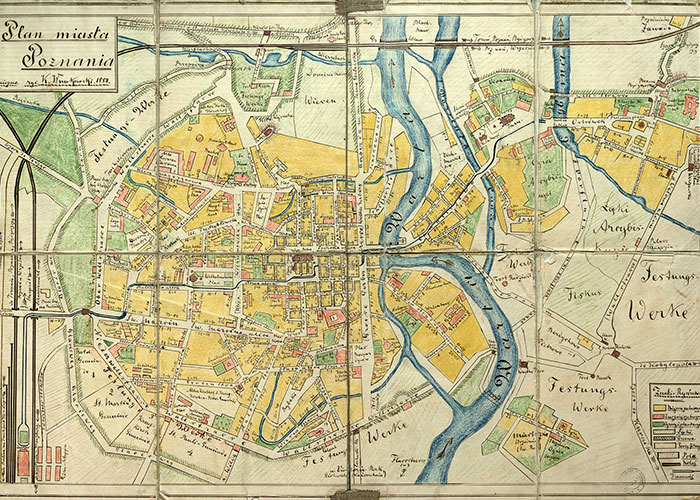
Anthony Richard Sumiejski, ca. 1915. Anthony came to Nova Scotia in September 1912, arriving at Halifax from Rotterdam on the SS Uranium. He told immigration officials that he was a miner and was going to Glace Bay. Read Full Caption... View Full Screen Image
Anthony Richard Sumiejski, ca. 1915. Anthony came to Nova Scotia in September 1912, arriving at Halifax from Rotterdam on the SS Uranium. He told immigration officials that he was a miner and was going to Glace Bay. Many people from Poland had emigrated to Nova Scotia in the decade or so before the war, and lived and worked in the mining communities around Glace Bay and the steel plants at Sydney and Sydney Mines. He immediately got a job with the Dominion Coal Company, working for about a year in Glace Bay as an interpreter. In 1913 he moved to Sydney, where he worked as a foreman of a “nail and wire gang” at the Dominion Iron and Steel Company plant. By 1916, he was living in the Ross Block (200 Charlotte Street). So too was Robert Hubley, who also worked at the steel plant and became Anthony’s closest friend and next of kin in Canada. (Beaton Institute, Cape Breton University, Robert A. Hubley fonds)
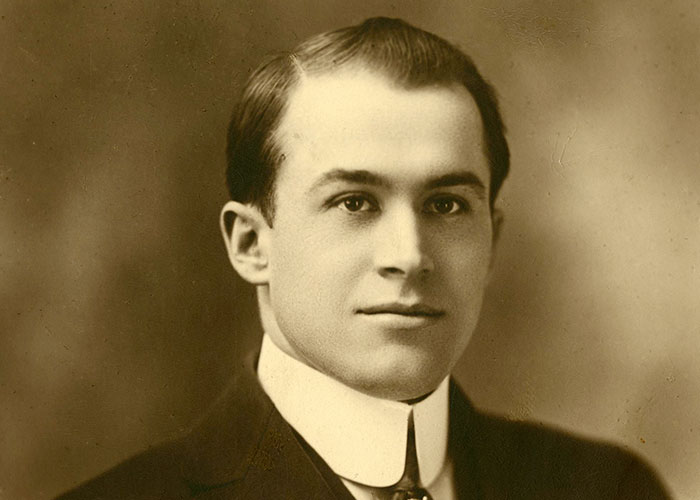
Naturalization record for Anthony Richard Sumiejski, 1914. As a part of the British Commonwealth, Canada and its citizens were classified as British subjects, and Anthony was naturalized as such on October 29, 1914 in Sydney. Read Full Caption... View Full Screen Image
Naturalization record for Anthony Richard Sumiejski, 1914. As a part of the British Commonwealth, Canada and its citizens were classified as British subjects, and Anthony was naturalized as such on October 29, 1914 in Sydney. At the time, naturalization required three years residence in the country, however Anthony had only been in Canada for two. Perhaps Anthony rushed the process of becoming a citizen because the outbreak of war had stirred up suspicion and even fear of the many “enemy aliens” living in the area. He presumably hoped that naturalization would be helpful. (Beaton Institute, Cape Breton University, Robert A. Hubley fonds)
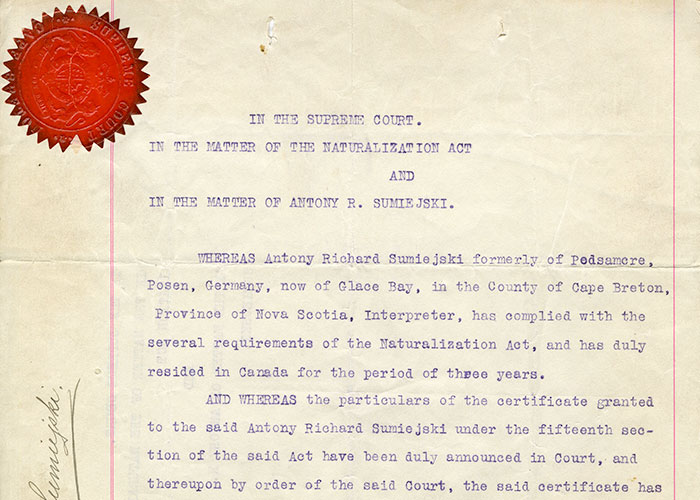
Lieutenant Michael Dryden to Anthony Sumiejski, June 29, 1916. Anthony enlisted with the 106th Battalion (Nova Scotia Rifles) in July 1916. The 106th, which was authorized in November 1915, was based in Truro and had a number of steelworkers and miners among its ranks. Read Full Caption... View Full Screen Image
Lieutenant Michael Dryden to Anthony Sumiejski, June 29, 1916. Anthony enlisted with the 106th Battalion (Nova Scotia Rifles) in July 1916. The 106th, which was authorized in November 1915, was based in Truro and had a number of steelworkers and miners among its ranks. The battalion recruited three companies on the northeastern mainland of Nova Scotia (Colchester, Cumberland, Pictou and Antigonish Counties) and a fourth (D Company) in Cape Breton. Anthony was placed in D Company, which was commanded by Lieutenant Michael Dryden, who Anthony knew because he was the senior clerk in the employment department at the steel plant. (Beaton Institute, Cape Breton University, Robert A. Hubley fonds)

Anthony Sumiejski to Robert A. Hubley and others, July 9, 1916. Anthony’s Canadian citizenship was very important to him. Following his enlistment in the CEF, he wrote to his friends and coworkers in Sydney. Read Full Caption... View Full Screen Image
Anthony Sumiejski to Robert A. Hubley and others, July 9, 1916. Anthony’s Canadian citizenship was very important to him. Following his enlistment in the CEF, he wrote to his friends and coworkers in Sydney: “Believe me my Dear Friends, I am going to fight the battle of free nations, and I will prove true to my oath as a Canadian, and to any service that will be required, willingly sacrifice my life.” (Beaton Institute, Cape Breton University, Robert A. Hubley fonds)

Soldiers of the 25th Battalion CEF, ca. 1914-1918. The 106th Battalion sailed from Halifax for England on the Empress of Britain on July 15, 1916, arriving at Liverpool on the 25th. Like most other battalions, it was broken up to provide reinforcements for battalions already in the field. Read Full Caption... View Full Screen Image
Soldiers of the 25th Battalion CEF, ca. 1914-1918. The 106th Battalion sailed from Halifax for England on the Empress of Britain on July 15, 1916, arriving at Liverpool on the 25th. Like most other battalions, it was broken up to provide reinforcements for battalions already in the field. On October 5, 1916, Sumiejski and Dryden were both transferred into the 40th Battalion. When it was broken up on November 27, 1916, both men were transferred into the 25th Battalion, which was already in France. (Beaton Institute, Cape Breton University, Reference number: 84-113-14213)
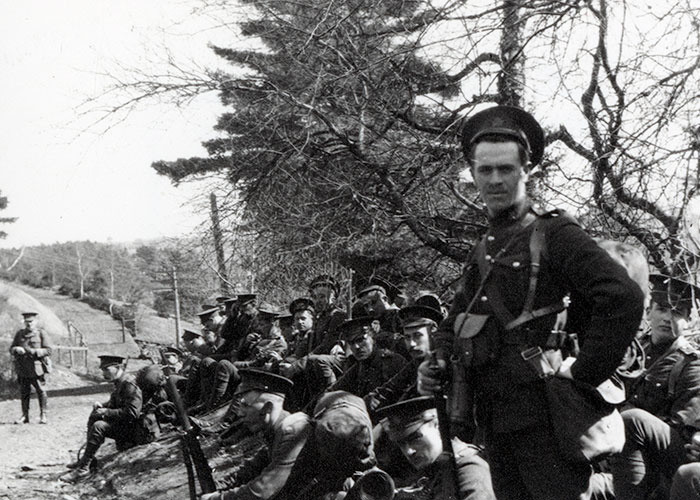
Out of the sight of men
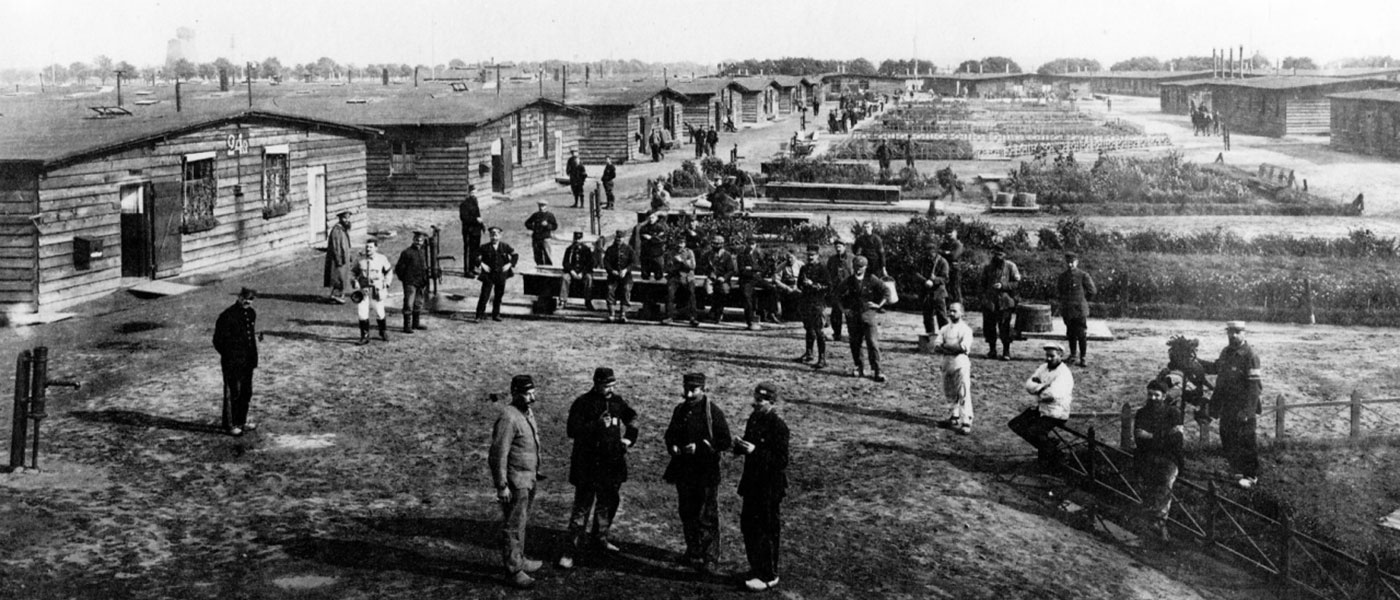
Friedrichsfeld Prisoner of War Camp, Germany, ca. 1914-1918.
Historical narratives of the First World War often focus on the heroism of the men and women who served overseas. Stories of determination and victory frequently portray those who fought as brave and selfless in their sacrifice for King and Empire. While their efforts earned recognition and pride, not everyone who served was celebrated. In reality, some were almost forgotten.
Approximately 3,847 Canadians were taken prisoner during the war, 300 of whom died in captivity in German prison camps. Those who were captured or surrendered were sometimes characterized as weak, and their failure to overcome the enemy served as a source of embarrassment that countered the ideals of strength and dignity in the battlefield.
Once removed from the theatre of war, many prisoners suffered the effects of illness, neglect, starvation, torture, and overwork. These men endured such hardship in the hope of someday returning to freedom, including Anthony Sumiejski of Poland, who emigrated to Canada before the war in search of a better life.
Seven One Six Two Five Three
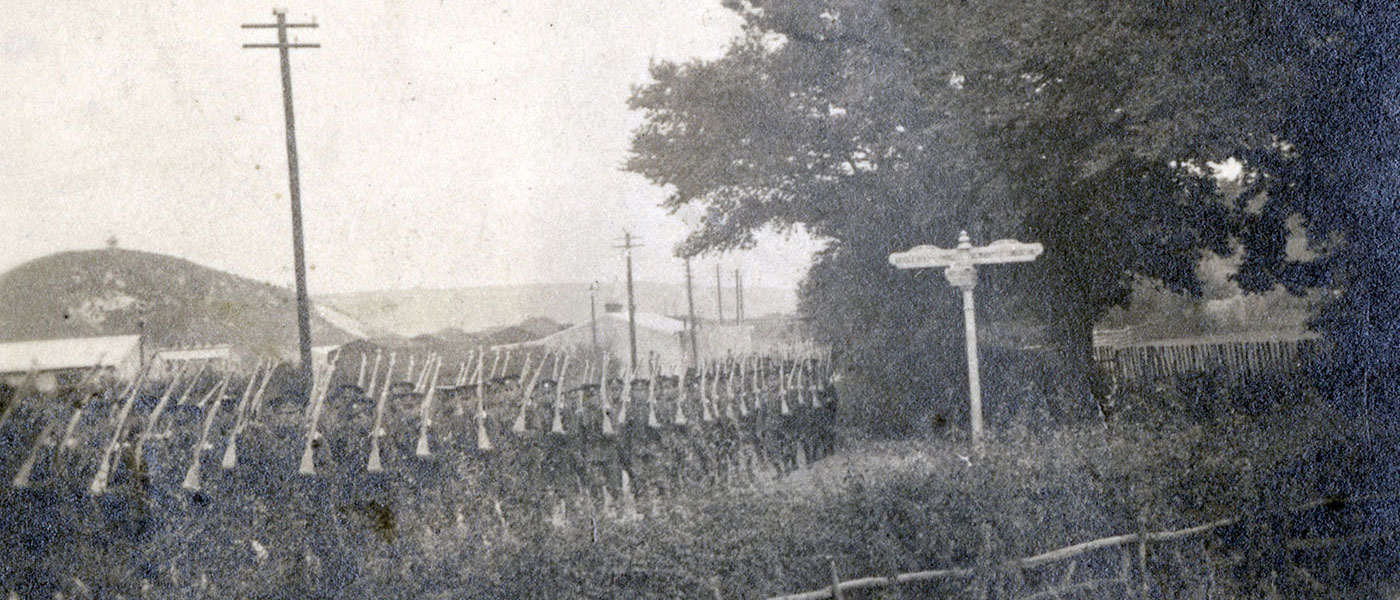
Soldiers of the 25th Battalion CEF, ca. 1914-1918.
Anthony was 28 and working at the Sydney Steel Plant when he left Sydney and travelled to Truro to enlist with the 106th Battalion (Nova Scotia Rifles) in July 1916 (regimental #716253). After serving several months in England, he was eventually transferred into the 25th Battalion in November 1916 and sent to France.
The following year, he participated in the Battle of Vimy Ridge on April 9, 1917. In a letter written to friend Robert Hubley nine days later, Anthony expressed his relief to have survived the fighting and boasted about the Canadian victory. But his luck and elation was short-lived. In a tragic turn of events less than three weeks later, Anthony was captured by the Germans while the 25th Battalion was engaged in action during the Attack on the Arleux Loop in the north of France on April 28, 1917. He later described that day as “the most unfortunate one of my life, but my health and hopes will see me through again to dear old Canada into the circle of my friends.” Anthony was officially reported missing following his capture, but it would be months before his whereabouts were known.
View excerpts from Anthony’s Canadian Expeditionary Force Service File.
Library and Archives Canada, Personnel Records of the First World War. “Sumiejski, Antony Richard,” RG 150, Accession 1992-93/166, Box 9420 – 30, page 2. View Full Screen Image
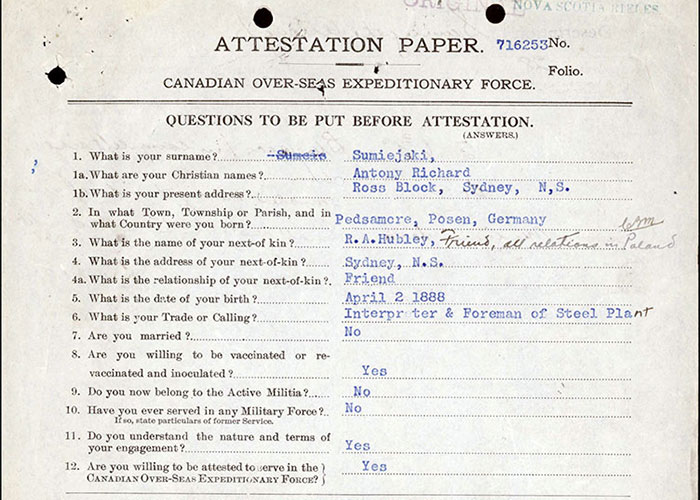
Library and Archives Canada, Personnel Records of the First World War. “Sumiejski, Antony Richard,” RG 150, Accession 1992-93/166, Box 9420 – 30, page 3. View Full Screen Image

Library and Archives Canada, Personnel Records of the First World War. “Sumiejski, Antony Richard,” RG 150, Accession 1992-93/166, Box 9420 – 30, page 4. View Full Screen Image

Library and Archives Canada, Personnel Records of the First World War. “Sumiejski, Antony Richard,” RG 150, Accession 1992-93/166, Box 9420 – 30, page 22. View Full Screen Image

Library and Archives Canada, Personnel Records of the First World War. “Sumiejski, Antony Richard,” RG 150, Accession 1992-93/166, Box 9420 – 30, page 23. View Full Screen Image

Library and Archives Canada, Personnel Records of the First World War. “Sumiejski, Antony Richard,” RG 150, Accession 1992-93/166, Box 9420 – 30, page 24. View Full Screen Image
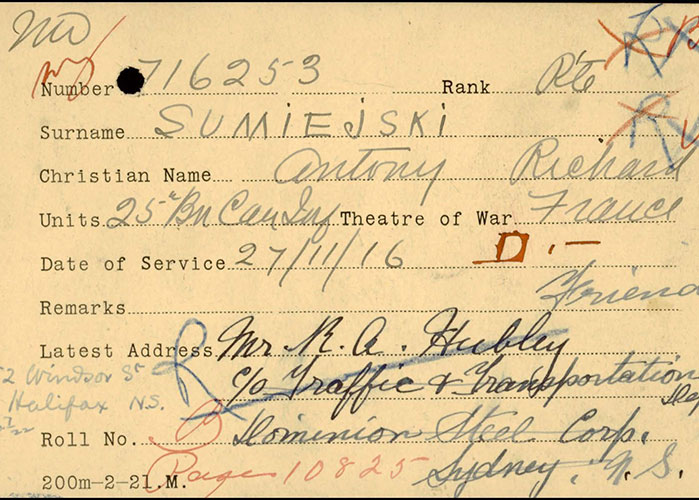
Library and Archives Canada, Personnel Records of the First World War. “Sumiejski, Antony Richard,” RG 150, Accession 1992-93/166, Box 9420 – 30, page 26. View Full Screen Image
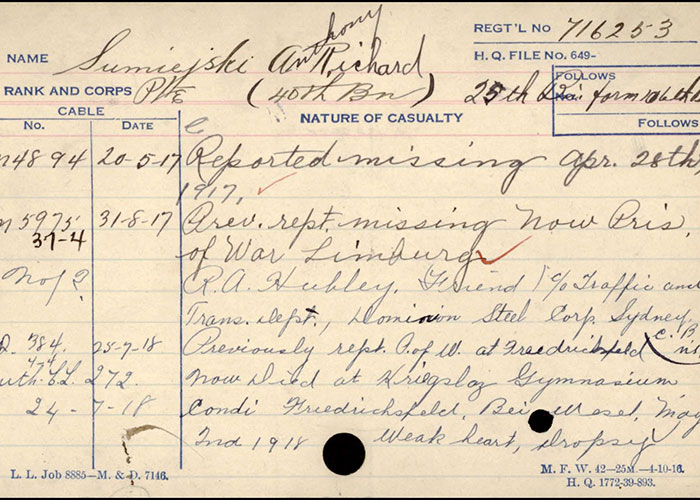
Library and Archives Canada, Personnel Records of the First World War. “Sumiejski, Antony Richard,” RG 150, Accession 1992-93/166, Box 9420 – 30, page 27. View Full Screen Image

As Ever, Anthony

Correspondence from Friedrichsfeld Prisoner of War Camp, Germany, 1918.
As Ever, Anthony
It was not until August 31, 1917 that Anthony was known to be a prisoner of war (POW) at a German camp at Limburg, a small town northwest of Frankfurt. Limburg was just a temporary holding camp and on November 24, 1917 it was confirmed that he had been transferred to the Friedrichsfeld POW camp, which was about 100 kilometres north of Cologne, 5 kilometres from the town of Wesel, and adjacent to a German army training camp. Friedrichsfeld was a huge camp, housing some 35,000 prisoners from the various Allied armies.
The American YMCA, which did extensive relief work in the German POW camps, considered Friedrichsfeld to be one of the better camps in terms of general conditions. Food was a problem but this reflected the severe shortage of food in Germany by this time, rather than a deliberate policy. Space was allocated for sports and gardens, and also a laundry area and shower rooms for prisoners. The camp was also known for its theatre and entertainment shows produced by the prisoners. Despite Friedrichsfeld’s reputation with the YMCA, the reality is that we do not know how Anthony was treated, or if he was treated differently than other men because he was a German Pole who fought for the other side.
Anthony’s correspondence to Robert Hubley is full of assurances that he was fine, despite his hunger and the lack of food. He often requested care packages from Robert filled with comforts from home, which were facilitated and distributed by the Red Cross to prisoners of war. Correspondence was censored, and mail (both to and from Canada) could take weeks (and sometimes months) to reach its intended recipients. Anthony commented frequently on the loneliness imparted by these delays, and wrote his friends often in eagerness for news from Sydney. His situation seemed to improve after a time, and despite the difficult circumstances he faced, his correspondence reflects a persistent optimism and hope that he would eventually return to Canada. Sadly, his dream of freedom would never be realized.
View the records in the gallery below for more information about Anthony's capture and imprisonment.
Correspondence addressed to Robert Hubley, describing Anthony Sumiejski’s participation in the Battle of Vimy Ridge, France, April 18, 1917. (Beaton Institute, Cape Breton University, Robert A. Hubley fonds) View Full Screen Image

Night letter addressed to Robert Hubley, Sydney, May 21, 1917. (Beaton Institute, Cape Breton University, Robert A. Hubley fonds) View Full Screen Image
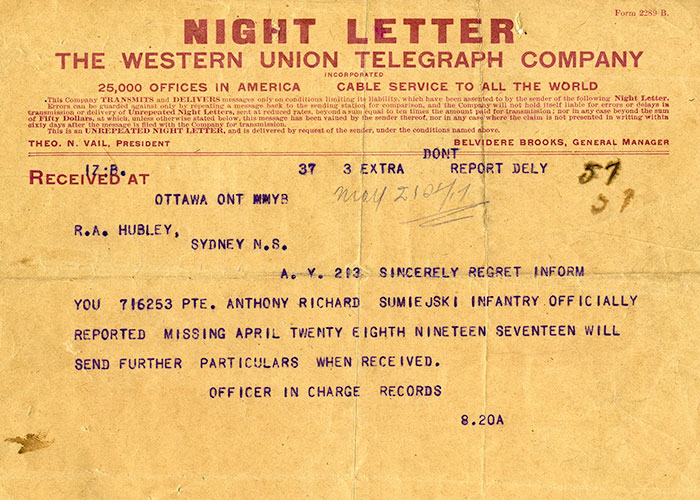
Telegram addressed to Robert Hubley, Sydney, August 31, 1917. (Beaton Institute, Cape Breton University, Robert A. Hubley fonds) View Full Screen Image

Anthony Sumiejski to Robert Hubley, Friedrichsfeld Prisoner of War Camp, Germany, October 15, 1917. (Beaton Institute, Cape Breton University, Robert A. Hubley fonds) View Full Screen Image
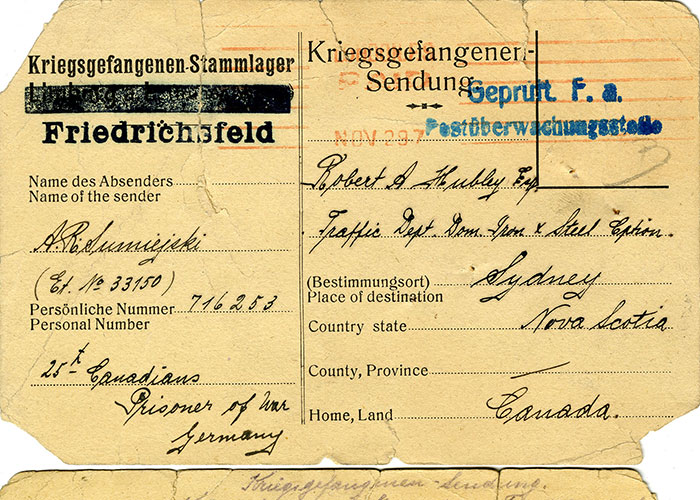
“My last wish is to think of me during my absence the same as if I was in your midst.”

Address for Private Anthony Sumiejski, Prisoner of War, Friedrichsfeld, Germany, ca. 1918.
There were many recent immigrants to Canada who served in the war, especially from Eastern and Southern Europe. This meant soldiers were fighting against men from their own former homelands. These immigrants were part of the extraordinary wave of immigration during the approximately twenty prewar years, when the Canadian population rose by one third despite the ongoing departure of Canadians for the United States. The Dominion Steel and Coal Company and the Nova Scotia Steel and Coal Company welcomed this wave of workers and even recruited them in some cases. The Sydney industrial area, which was the fastest growing region in the Maritimes in those years, was the most multicultural community in Eastern Canada by 1914.
The impression still held by many people that the prewar years were stable and calm compared to what came later is inaccurate. The later nineteenth century and early twentieth was a period of tremendous instability, major population movements, and growing social unrest. This was as true of Nova Scotia and Cape Breton as elsewhere. Living and working conditions were appalling, and not everyone welcomed foreigners with their “strange” languages and different social traditions.
Private Anthony Richard Sumiejski was one of many young people who fled poverty and often persecution in Eastern Europe to make a new life in Canada, and fought less for “King and Empire” but to show their willingness to do their duty as new citizens as part of their struggle for acceptance in a not always welcoming society. The sufferings and deaths of so many young men in what really was an unnecessary war constitute a tragedy that haunts us still.
“Let those who come after see to it that his name not be forgotten”
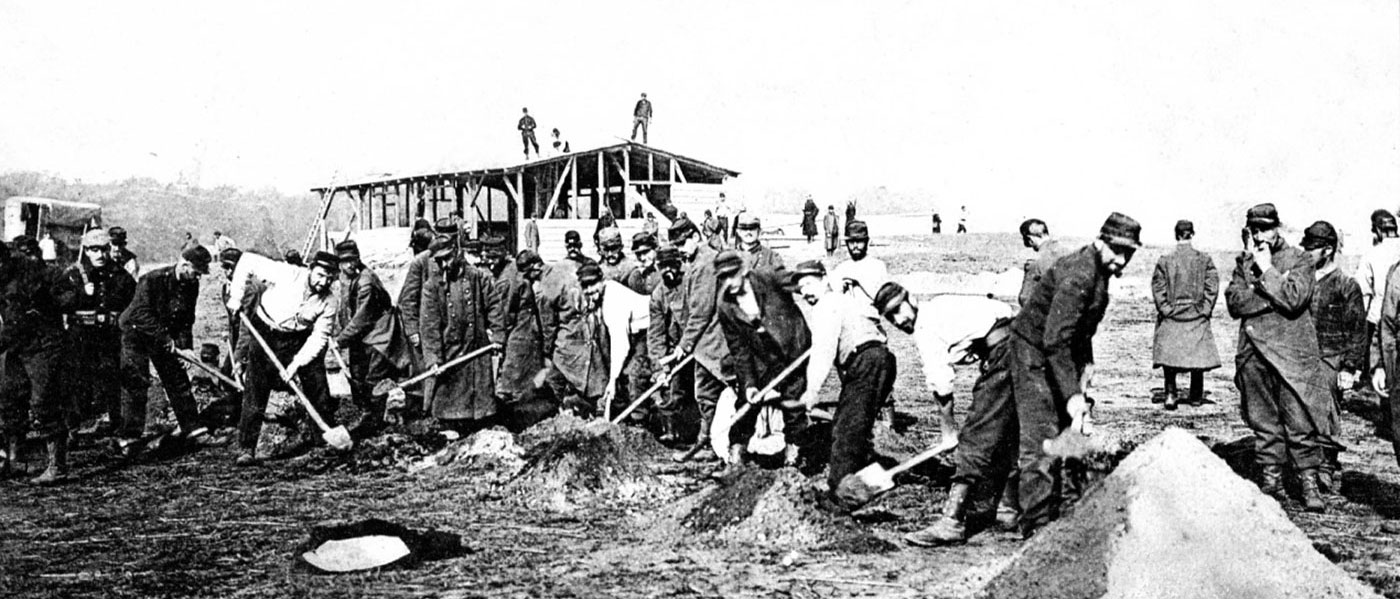
Friedrichsfeld Prisoner of War Camp, Germany, ca. 1915.
Anthony was a prisoner at Friedrichsfeld for over seven months when he died on May 2, 1918. His military service file records list his cause of death as “weak heart/dropsy.” One Nova Scotia newspaper reported his “death was due to weakness of the heart and dropsy, and may have been hastened by barbarous treatment given him by captors, because, once a German citizen, he fought against Germany.” This report was speculative however, and the particular circumstances surrounding his death cannot be confirmed.
Anthony was initially buried in the camp cemetery at Friedrichsfeld, but his remains were later transferred to the Condé-sur-Escaut Communal Cemetery in northern France, on the border with Belgium. His story remains important for two reasons: he was a recent immigrant to Nova Scotia when he voluntarily enlisted to serve in the First World War, and he was one of the 3,847 officers and enlisted men from the Canadian Corps who were captured during the war.
View the records in the gallery below for more information about Anthony's death.
Canadian Expeditionary Force Death Certificate for Private Antony R. Sumiejski, issued 1919. (Beaton Institute, Cape Breton University, Robert A. Hubley fonds) View Full Screen Image
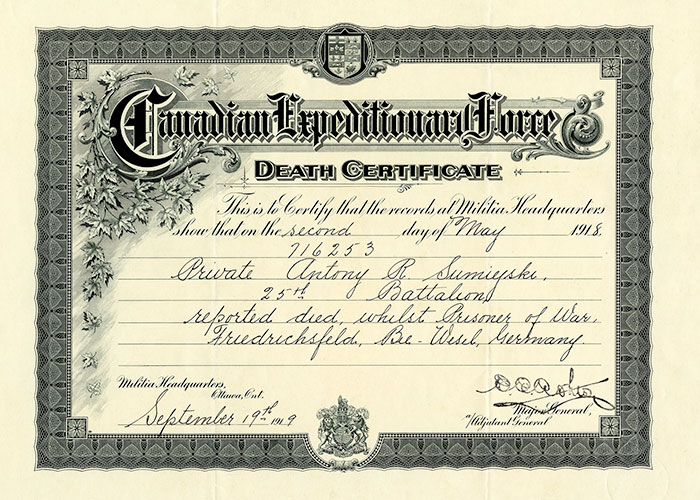
Memorial Scroll for Private Antony Richard Sumiejski, issued by Buckingham Palace, ca. 1919. (Beaton Institute, Cape Breton University, Robert A. Hubley fonds) View Full Screen Image

Newspaper clipping re: the death of Private Anthony Sumiejski, 1918. 'Sumiejski A German Pole Who Died For Canada - Official Word Of Death Of Former City Man In Hun Prison,' Publisher unknown. (Beaton Institute, Cape Breton University, Robert A. Hubley fonds) View Full Screen Image

Robert Hubley’s mother at the grave of Private Anthony Sumiejski, France, no date. (Beaton Institute, Cape Breton University, Robert A. Hubley fonds) View Full Screen Image
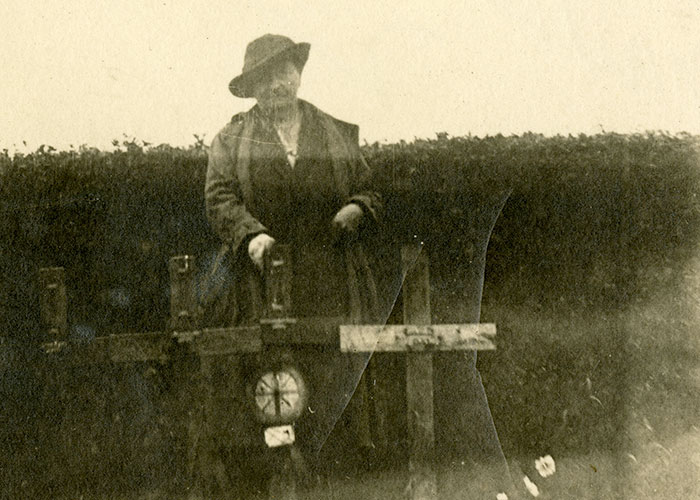
War grave of Private Anthony Richard Sumiejski, Condé-sur-l’Escaut Communal Cemetery, France, 2017. (Photograph courtesy of Pierre Vandervelden) View Full Screen Image
